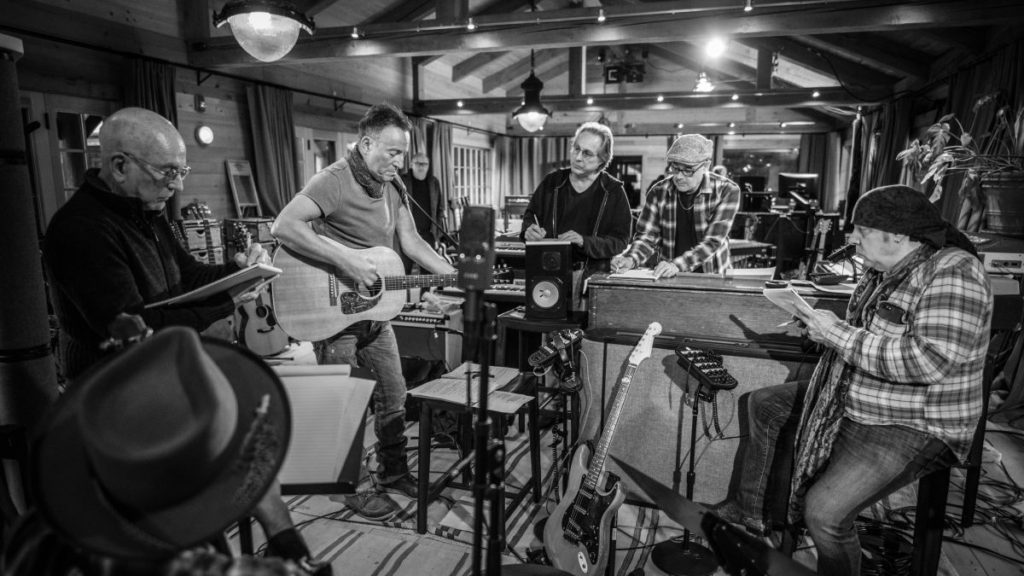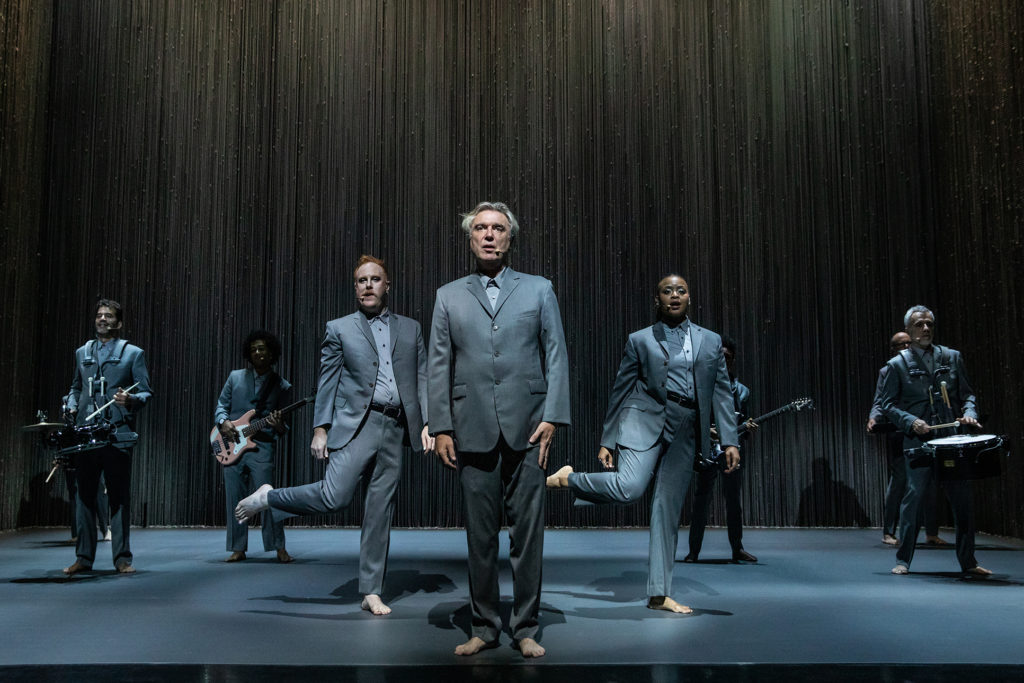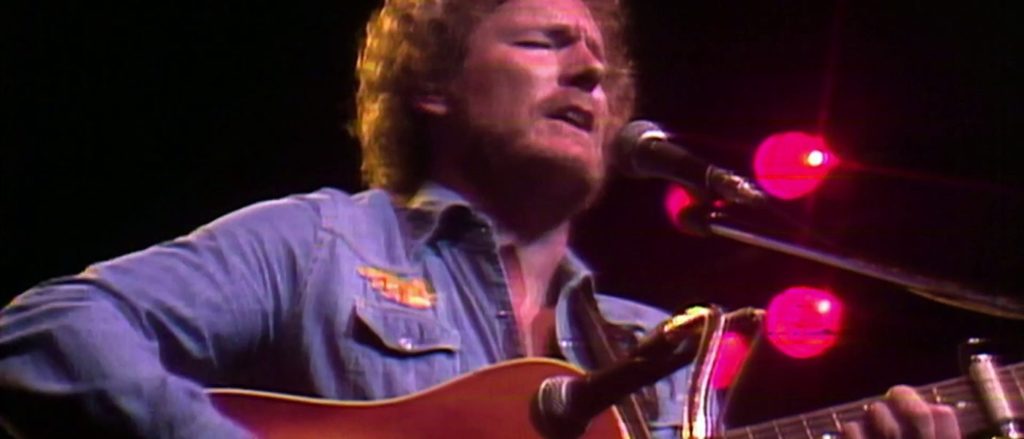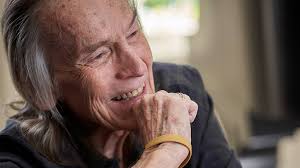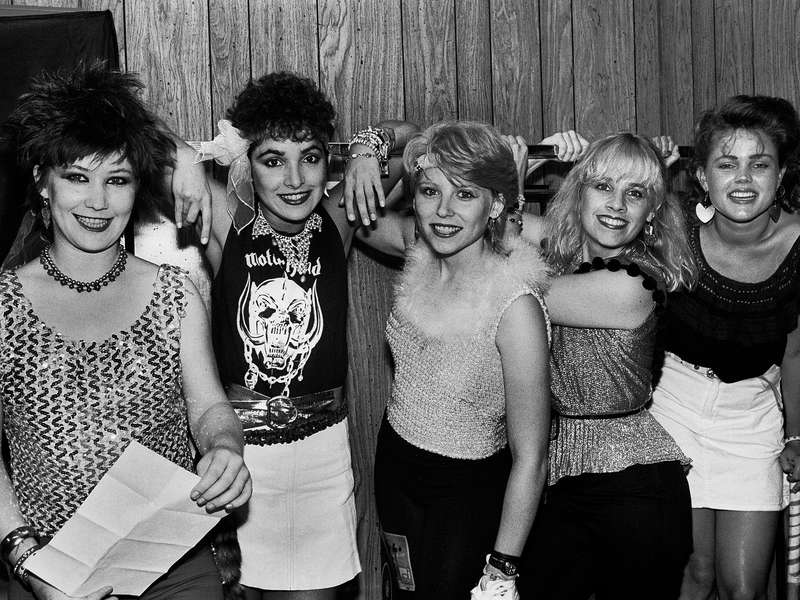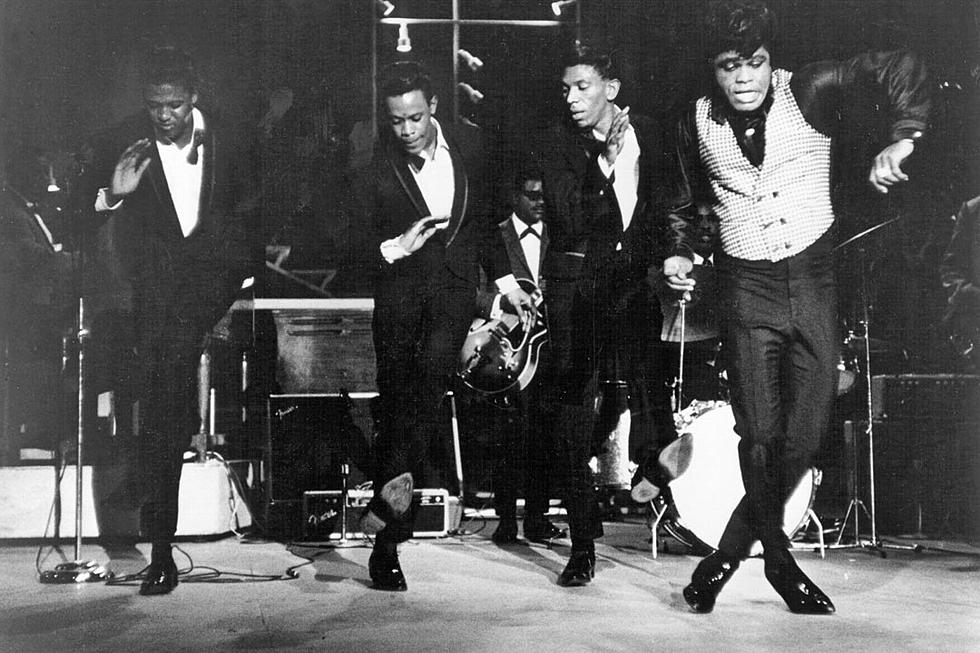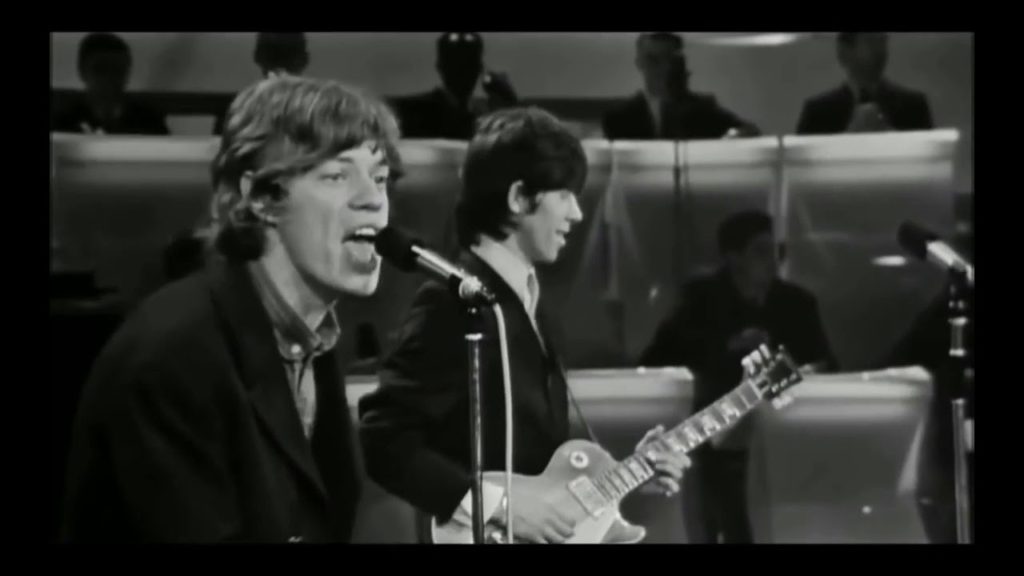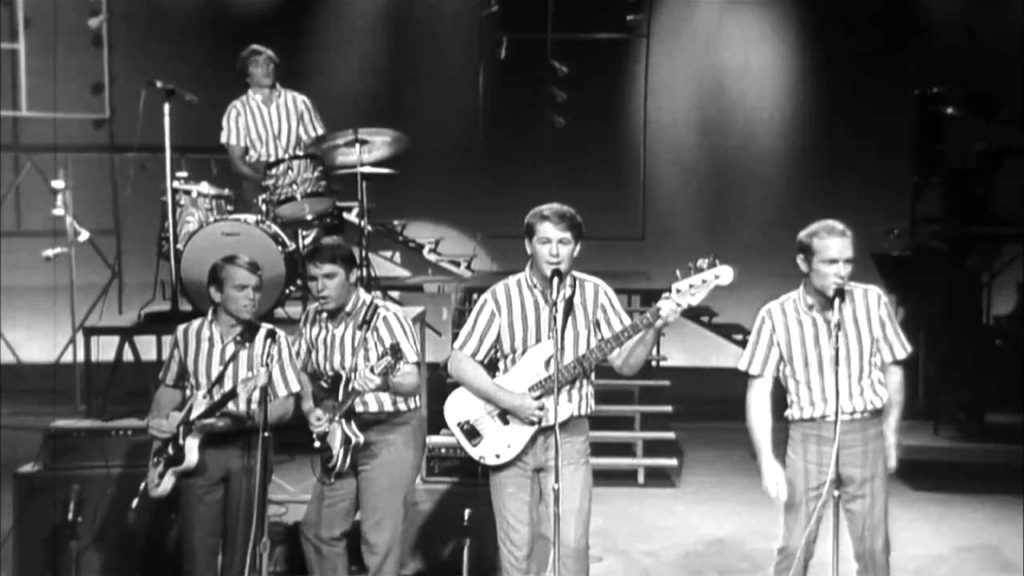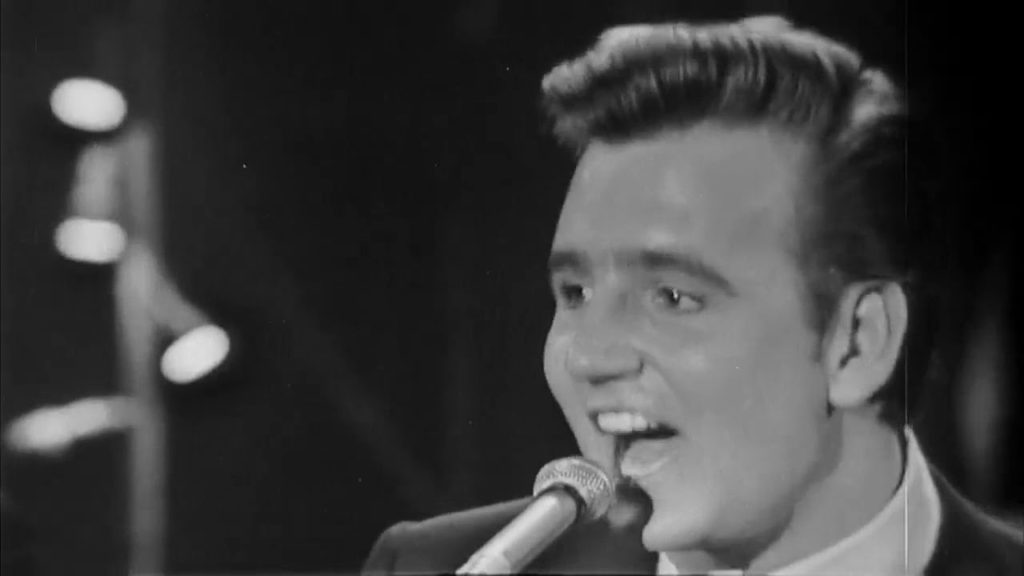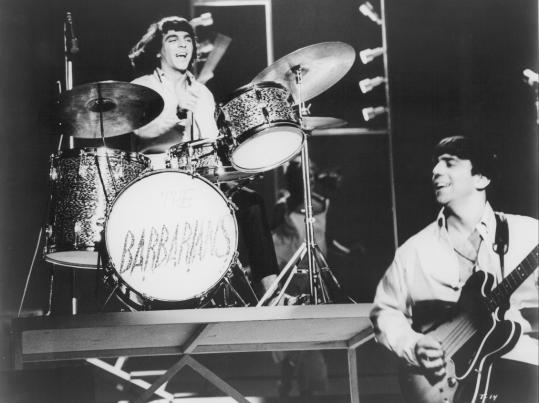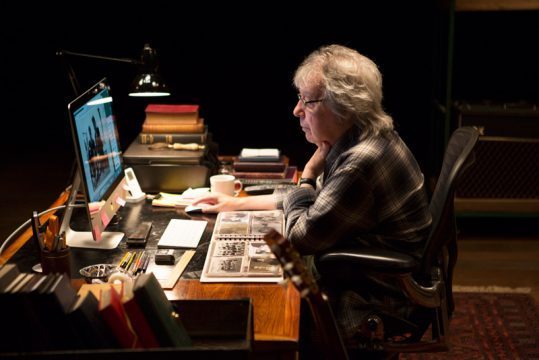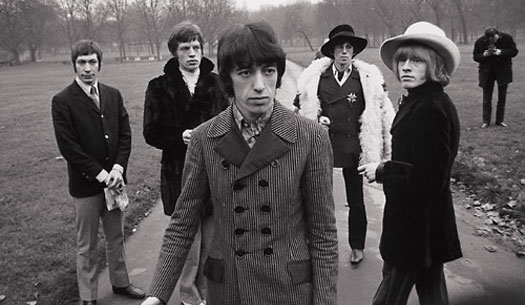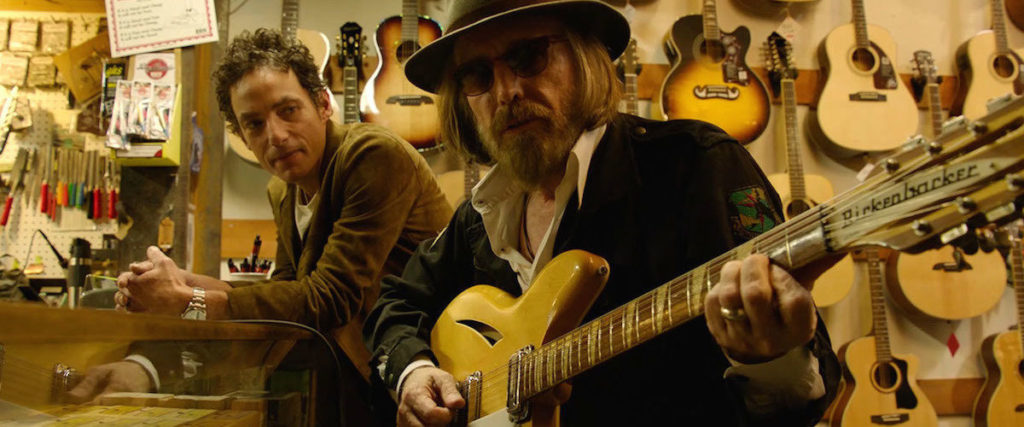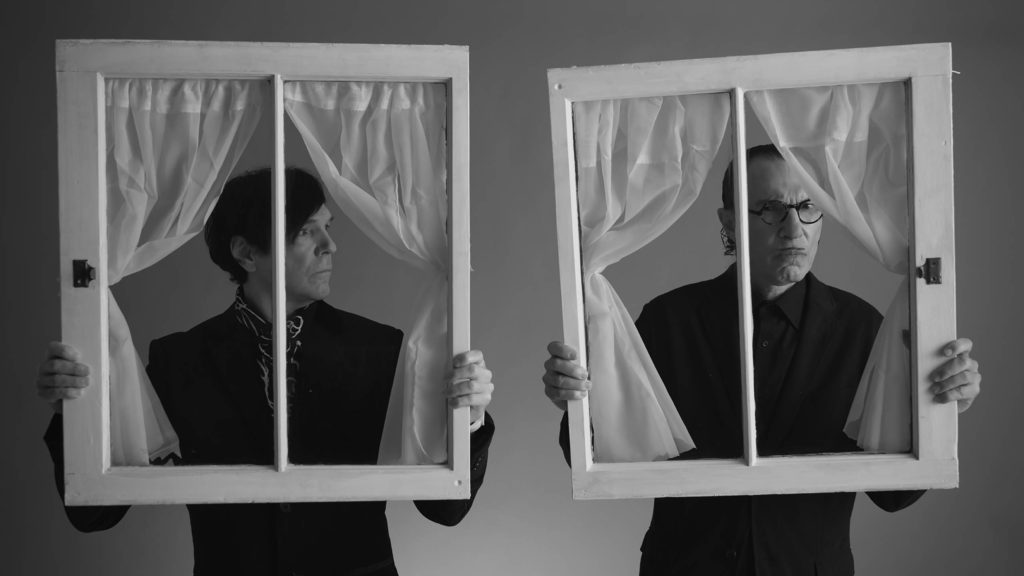
The Sparks Brothers is Edgar Wright’s affectionate documentary on a pop band that has been active for 54 years (and that I had never heard of). The band is Sparks, comprised of brothers Ron and Russell Mael, and The Sparks Brothers is one fun movie.
Ron writes the songs and plays keyboards, and Russell is the singer and front man. In the film, Sparks is described as “the best British pop band to come out of America” and “a snaky lead singer for the ladies and then the Hitler mustache”. Sparks was first produced by Todd Rungren, of all people, in 1967. (Both Rungren and Russell Mael were dating Miss Christine of the GTOs.) Pop success eluded them until they surged in the UK in 1974-75.
Then Sparks pioneered electro dance a couple years too early, came to hard rock a little late, and have kept moving on to the next project and musical style that interests them. Of course, that approach doesn’t let their fans get comfortable.
A musician says, “they don’t care about money or fame – just art for art’s sake”, which isn’t EXACTLY true. The Maels really DO want their music to be heard, and they really DO want to be popular and famous. They just won’t compromise artistically to get there.
What they WILL do is work with remarkable stamina and discipline. This is the rock first rock documentary I’ve seen without somebody’s serious drug use being a point of deflection. These guys marry an intense work ethic with their often bizarre art.
Their stage presence is remarkable. With his pretty boy looks and charisma, Russell bounds about as the quintessential front man. Ron silently stands behind his keyboard, posing with his, well, Hitler mustache (which he has now replaced with a pencil mustache).
Above all, Sparks is ever playful, and The Sparks Brothers is very funny. They match their stage persona with lyrics like “dinner for 12 is now dinner for 10 because I’m under the table with her“. Ron and Russell Mael themselves kick off the movie with a hilariously deadpan questionnaire.
Their performances are fun and witty, and their music is peppy and catchy. The overt humor sometimes masks lyrics that are poignant and even despairing.
Growing up in LA, Ron and Russell cherished their boyhood weekend matinees with their dad, filled with Westerns and war movies. As artsy UCLA students, they admired Ingmar Bergman and French New Wave cinema as much as they did The Who and the Kinks, They had lined up a movie project themselves with the great auteur Jacques Tati that fell through because of Tati’s health. In the 1990s, they invested six years in trying to make the Japanese manga Mai, the Psychic Girl as a movie musical with director Tim Burton. When that movie also died, they were devastated.
Happily, they have written the screenplay for a movie which has actually been finished. Annette, directed by Leo Carax (Holy Motors) and starring Adam Driver and Marion Cotillard, is coming out later this summer,
I may not love their music or think that Spark is important, but I sure like these guys. The Spark Brothers is a delight, and it’s damn funny, too.

